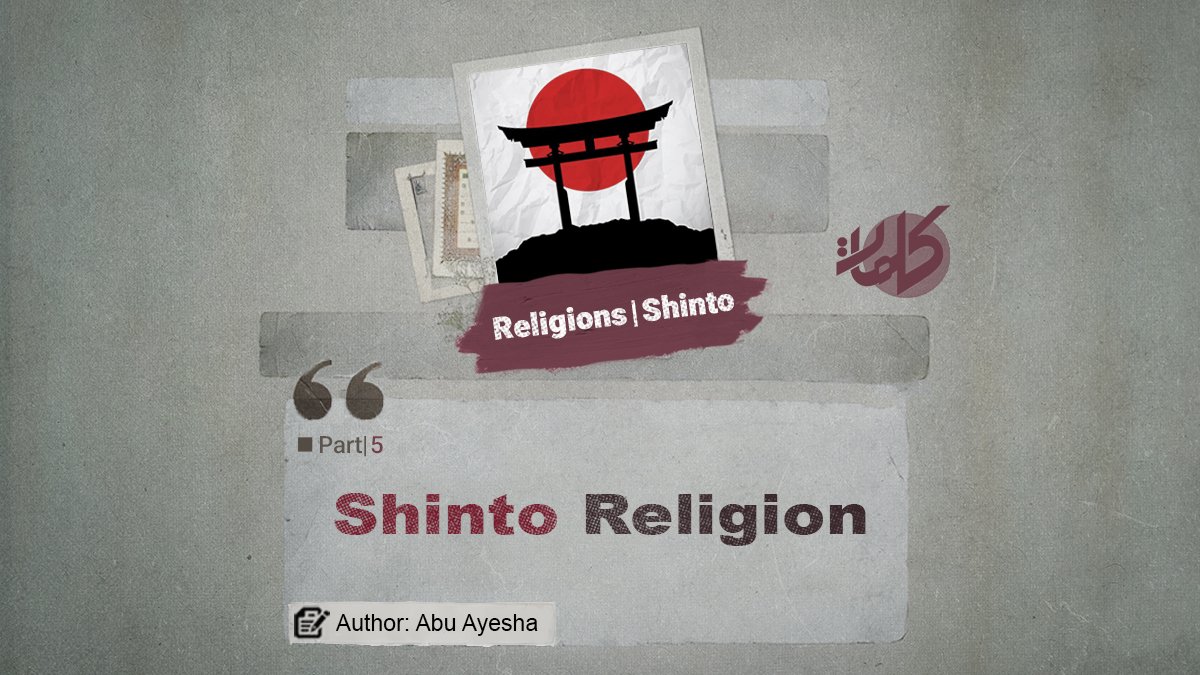Author: Abu Ayesha
Shinto Religion (part 5)
Introduction
By reading books written about the Shinto religion—especially in discussions about worship, deities, and sacred beings—we frequently encounter the term Kami or Kamis. Kami is one of the most important words and fundamental concepts among Shinto followers. To better understand what Kami is, why it holds such great significance in this religion, and what beliefs people have about Kami, in this section of our research we will address the definition of Kami, its nature, and the number of Kamis in Shinto.
Kami
Kami also refers to natural phenomena and supernatural powers. In Japanese religious and philosophical beliefs, Kamis have a profound influence on everything, including the daily lives of people. For this reason, they are worshipped so that divine blessings may be bestowed upon their followers. According to the myths, Kamis are attracted by material and spiritual purity, and are repelled by the absence or imbalance of these two elements. Kamis are directly connected with nature and may exist in mountains, waterfalls, trees, and rocks with unusual shapes.
The Meaning of the Word Kami
The word Kami has many meanings. On one hand, it refers to the spirits of nature—mountains, rivers, trees, rocks, and oceans—all of which are considered living and sacred. On the other hand, it points to the deities residing within these natural entities, or in fact, to a supernatural power, an ancestral spirit that protects the clan (the ancient social unit of Japan). The spirit of a Kami may also manifest in certain individuals—brave, exceptional, or talented people—who might then be regarded as living Kamis of elevated status. A Kami could convey its revelation through shamans, since they were considered “children of the spirit” (Miko).[1]
The phrase Kami-no-michi in Japanese is synonymous with Shinto or Shin Tao in Chinese, meaning “the way of the gods.” The literal sense of Kami is “higher” or “above,” and it applies to all natural beings worthy of respect, admiration, or fear: plants and trees, animals, mountains and seas, humans, and even evil or imaginary beings. The myths of Kami-no-michi seem to express the relationships among natural entities as reflected in the “collective consciousness” of the people.
Kami is a Japanese word or term used to denote all deities that exist in the universe. In Japan, this word is used for any type of god, or anything resembling or signifying divinity. [2]
The word Kami in Japanese means “above” or “superior.” It is quite reasonable to connect it with the word Ka, which means amazement or wonder—specifically the awe one feels upon seeing terrifying or incomprehensible things. It is possible that over time, this way of thinking was cultivated from this very root.[3]
It is worth noting, however, that in the beginning, the Japanese people did not give much importance to Kami or similar matters. Later, under the influence of Confucianism and Buddhism, they began to value their own religion and the beings they considered divine.
Definition of Kami
The great thinker Motoori Norinaga (1730–1801) summarizes the meanings of Kami as follows: “In general, one can say that Kami, first of all, refers to the gods of heaven and earth mentioned in ancient texts, as well as the spirits of Kami worshipped in shrines. Needless to say, it also includes human beings. Furthermore, beings such as birds, animals, trees, plants, seas, and mountains—in ancient usage, anything unusual, anything possessing superior power, anything awe-inspiring—were called Kami. The distinction here does not lie solely in excellence of origin, goodness, or virtuous deeds. Even evil and mysterious things, as long as they are extraordinary and fearsome, could be called Kami. Obviously, among the humans considered Kami, the successive generations of sacred emperors are not included.”[4]
The same Motoori Norinaga, one of the religious leaders of Shinto in the eighteenth century, explained his general understanding of the word Kami as follows: “All things that deserve veneration and sanctification, that frighten people by being extraordinary, and the forces that bring them into being are called Kami.”
He further adds: “It is not necessary for those things to be significant due to their great value, benefit, or harmfulness.” [5]
Thus, it becomes clear that even worthless things could be worshipped and regarded as Kami.
Kami refers to the deities of Shinto. Kamis are sacred objects, divine beings, natural phenomena, or symbolic entities that are related to humans as forebears and descendants, or more precisely, in an ancestral relationship. [6]
In Shinto, Kami is worshipped, and what is inferred from this word is “god” or “spirit.” However, in reality, this term encompasses many natural forces, both good and evil. Because of their superiority, these forces are revered and considered sacred. Thus, creative spirits, exalted ancestral spirits, and both living and non-living things such as plants, birds, waters, and rocks are all examples of Kami. [7]
Continues…
Previous Part / Next Part
References:
[1] Yusa, Michiko, Japanese Religions, translated by Hassan Afshar, First Edition, 1382 A.H. Solar, pp. 20–21.
[2] Al-Taeb, Mohammed Shaheen, article: Al-Shintoiyyah, published on Al-Taeb’s blog, n.d.
[3] Kojiki: The Sacred Book of Shinto, translated by Dr. Ehsan Moghaddas, First Edition, Winter 1380 A.H. Solar, p. 20.
[4] Yusa, Michiko, Japanese Religions, translated by Hassan Afshar, First Edition, 1382 A.H. Solar, p. 21.
[5] Kojiki: The Sacred Book of Shinto, translated by Dr. Ehsan Moghaddas, First Edition, Winter 1380 A.H. Solar, p. 19.
[6] Culture of Japan, authored by several anthropological and cultural thinkers, article writer: Hamideh Amiri Yazdani, n.d., p. 113.
[7] Kojiki: The Sacred Book of Shinto, translated by Dr. Ehsan Moghaddas, First Edition, Winter 1380 A.H. Solar, pp. 18–19.



